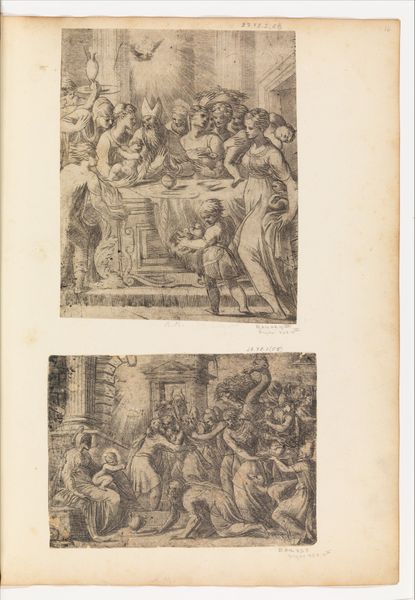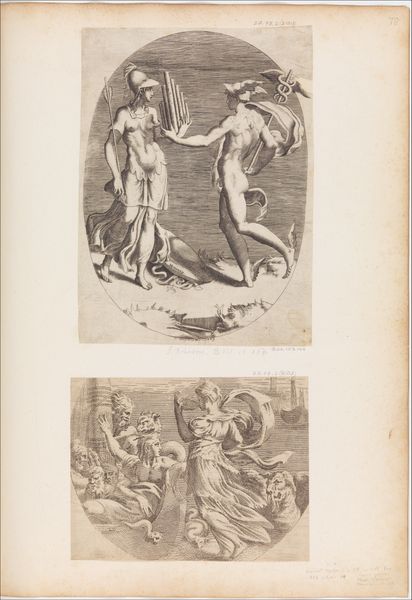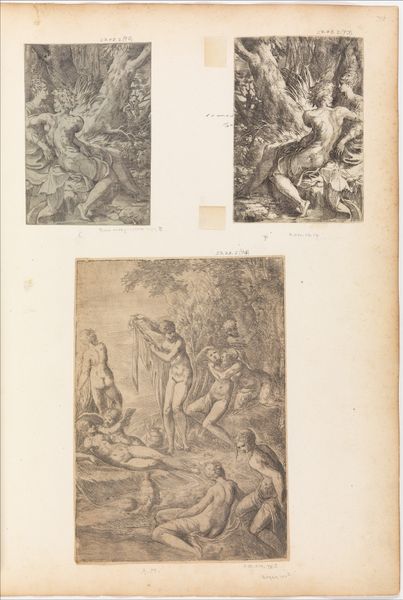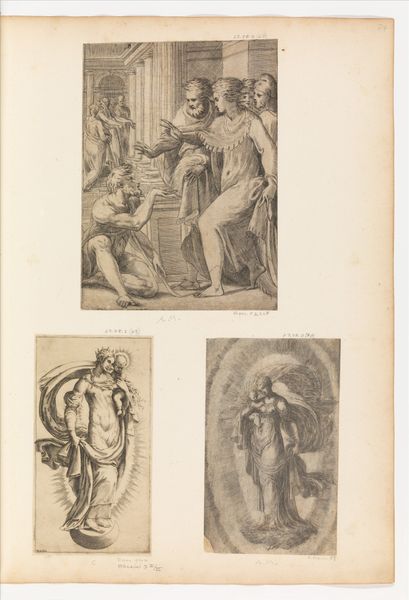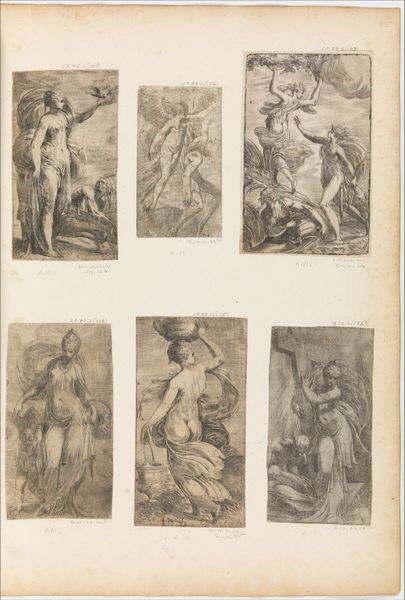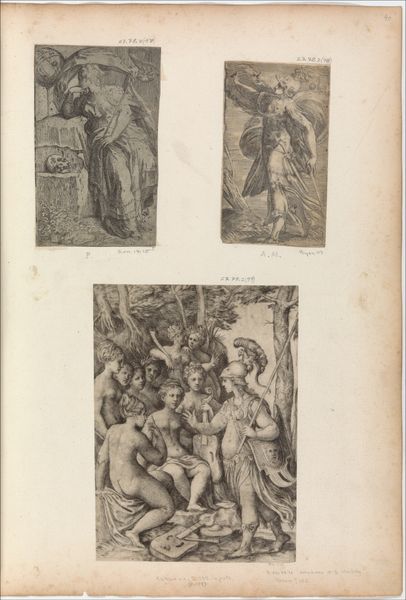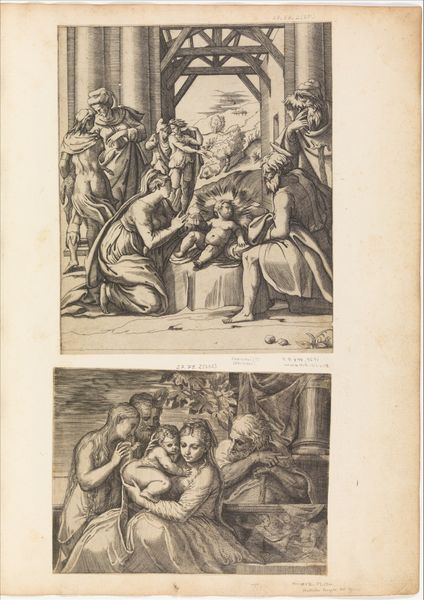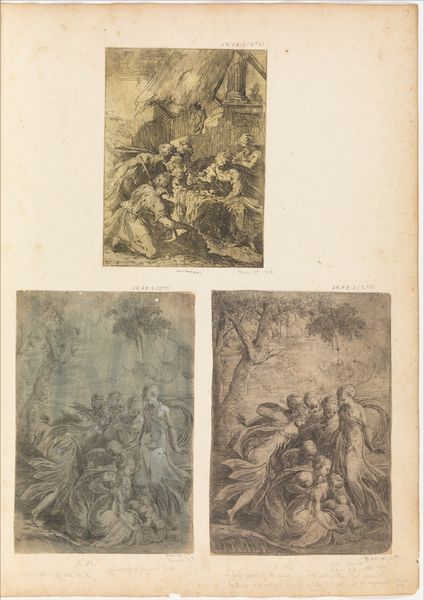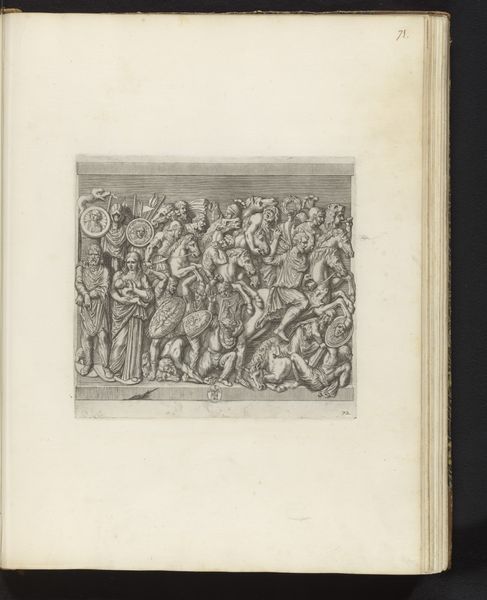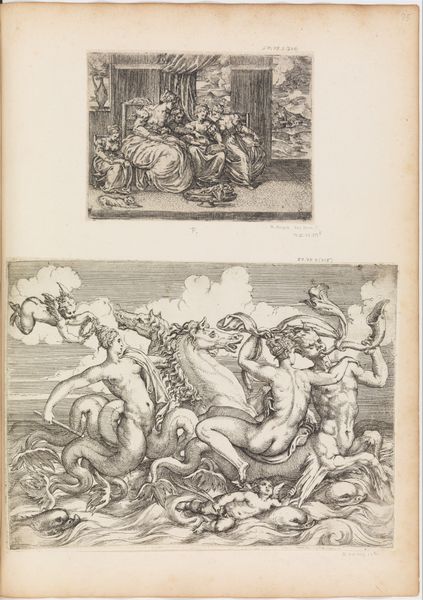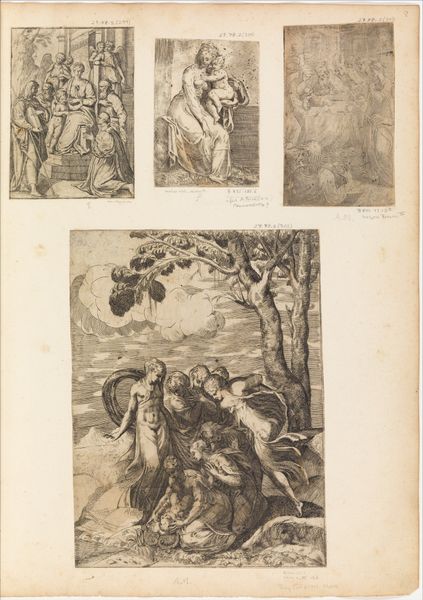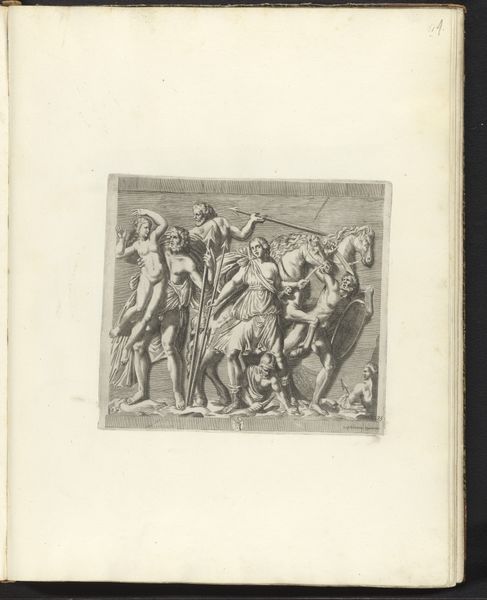
Moses Showing the Quails to the Israelites 1510 - 1563
0:00
0:00
drawing, print, etching, paper, engraving
#
drawing
#
narrative-art
# print
#
etching
#
mannerism
#
figuration
#
paper
#
11_renaissance
#
history-painting
#
engraving
Copyright: Public Domain
Editor: This is Andrea Schiavone’s "Moses Showing the Quails to the Israelites," an etching and engraving on paper made sometime between 1510 and 1563. I’m immediately struck by how dynamic the figures are, but also how crowded and chaotic the scene feels. What do you see in this piece beyond the surface level? Curator: Beyond the immediate impression, I see a potent commentary on power dynamics, visibility, and access. Schiavone presents a moment of divine intervention, yes, but through the lens of Mannerism, which often amplified emotionality and distortion. The Israelites' desperation is palpable. But let's consider *who* is seen, *who* is scrambling, and *who* orchestrates this salvation. What does it tell us about social hierarchies of the time? Editor: So, you're saying that even in this moment of miraculous provision, there's still a commentary on the existing social structures? The fact that Moses is separate from them, directing the miracle? Curator: Exactly! Who benefits, and on what terms? Consider the historical context. Venice, where Schiavone worked, was a hub of trade, with strict social stratification. Were those dynamics influencing his artistic choices? How might ideas of citizenship and access resonate in this composition, and even in contemporary society? What is *owed* to marginalized groups? Editor: I hadn't thought of it that way. Seeing it in light of social justice adds a whole other layer. So it becomes not just a Biblical scene, but a statement. Curator: Precisely. And Schiavone's choice of printmaking allows for wider distribution, making this a more democratic form. A way to spark discussion about the distribution of power, not just quails, within the culture of 16th Century Venice and our global community. Editor: Wow. It is empowering to think that art from so long ago can be relevant today, through dialogue, and new interpretation.
Comments
No comments
Be the first to comment and join the conversation on the ultimate creative platform.
